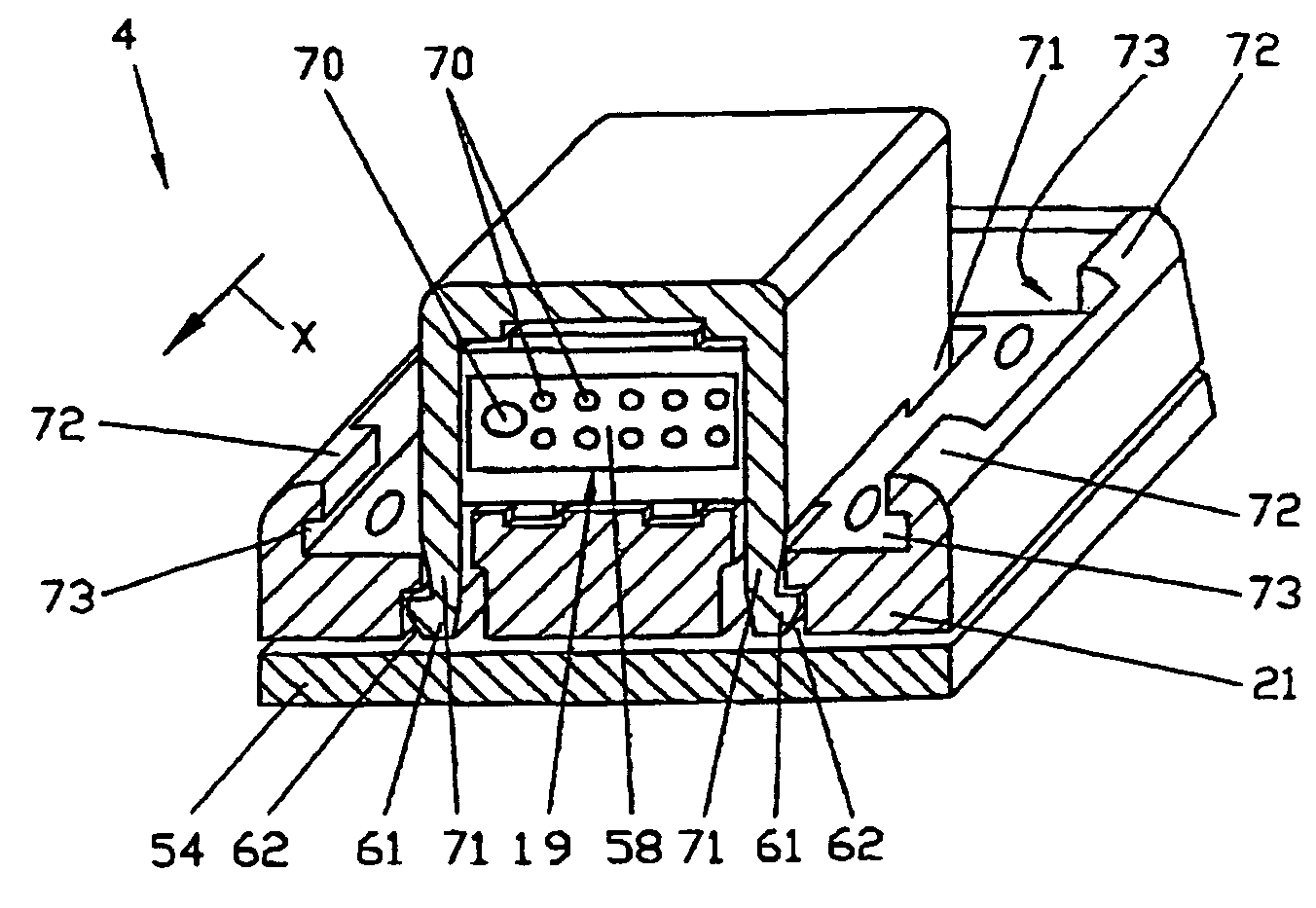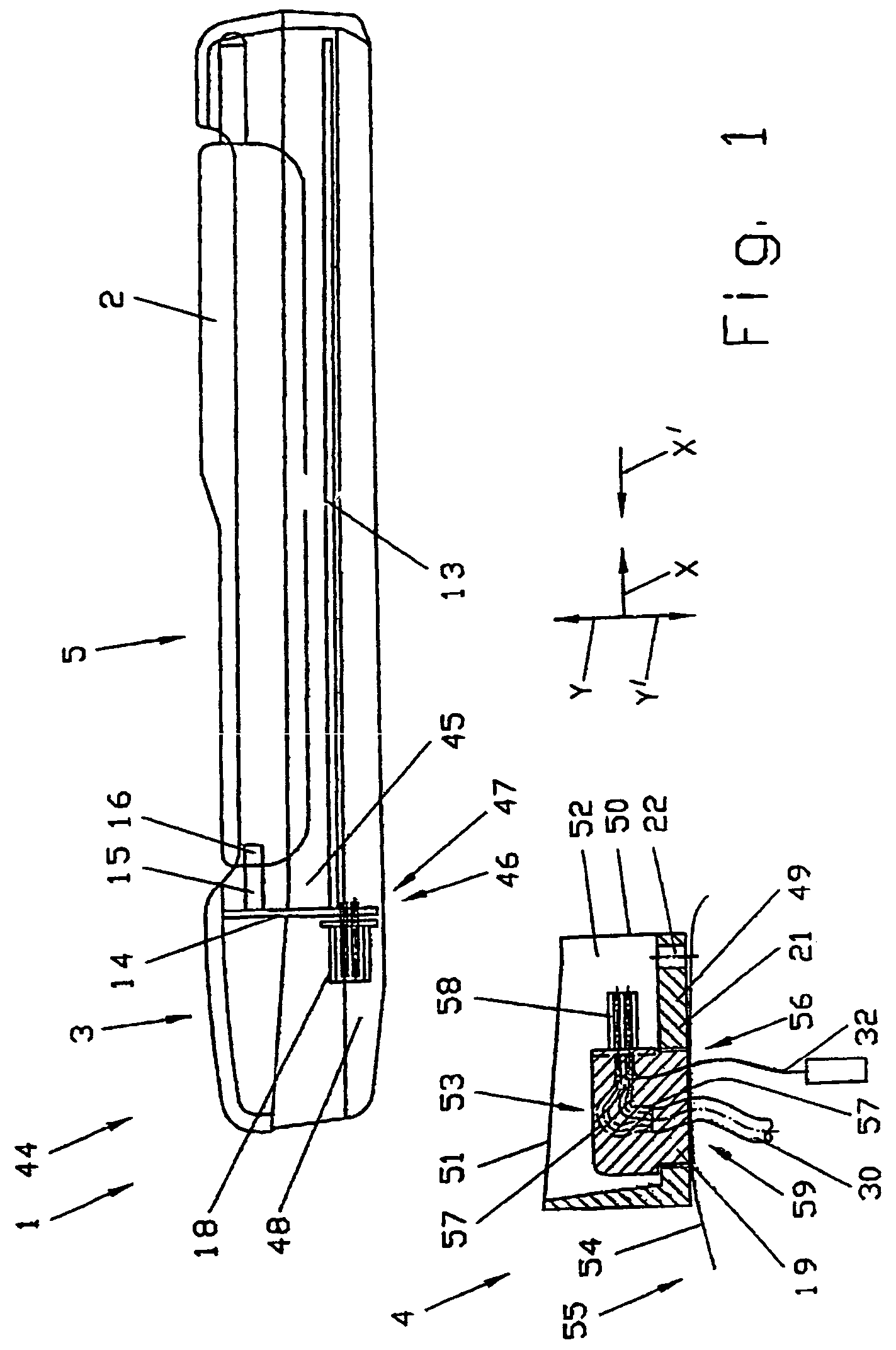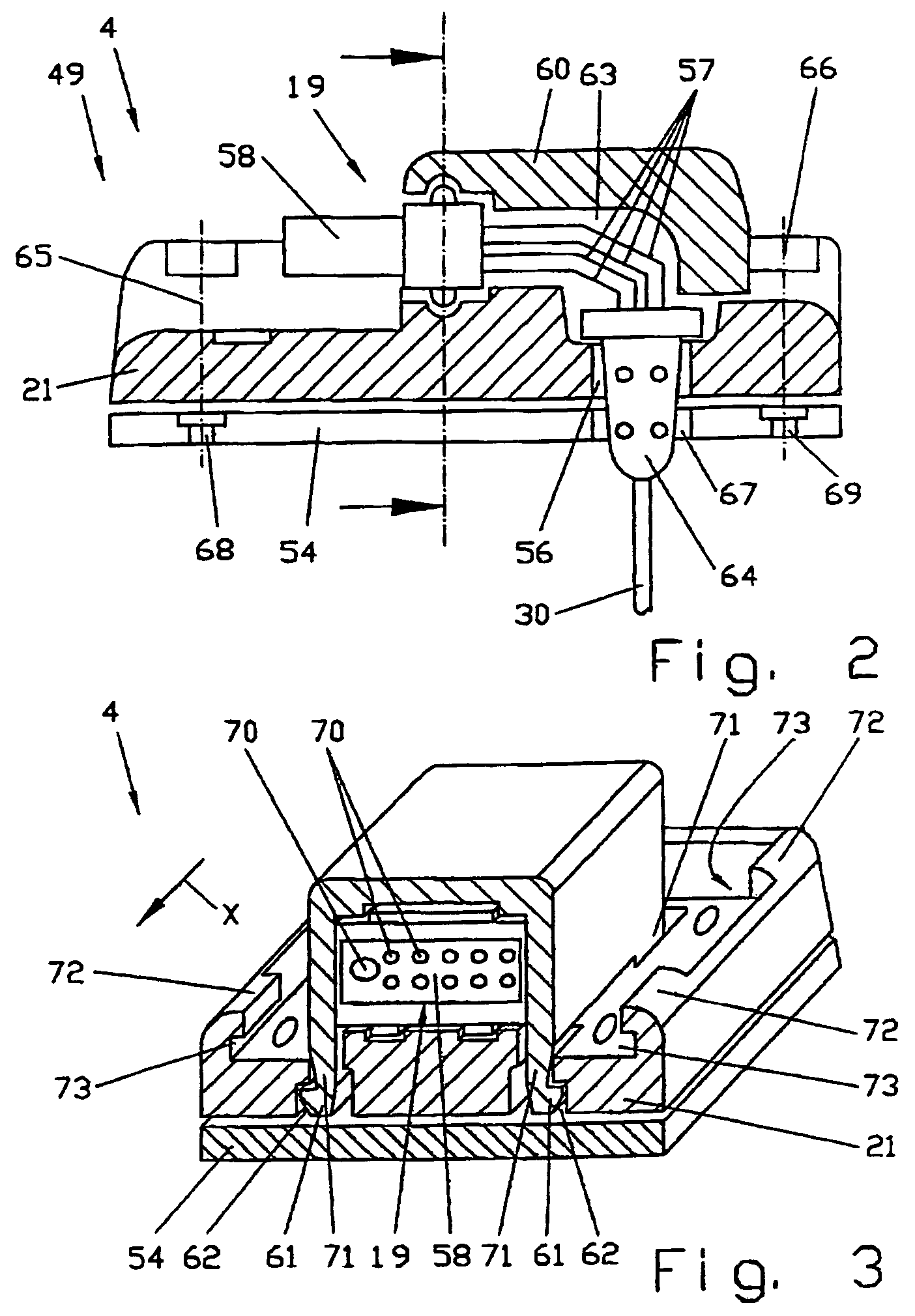[0015]The object of the invention is to propose an arrangement for integration of a communication device, which arrangement is completely upward-compatible by virtue of the replacement of a single component which can be used in the vehicle without any installation effort, and which allows the upgrading of a vehicle with apparatuses of different performance, occupies as little space as possible if not used, and then does not result in any risks of injury or accident either.
[0020]The mobile-telephone-specific accommodation housing, the device holder, comprises geometric, mechanical and electrical / electronic matching to the respective mobile telephone to be used, in particular with an electronic circuit being provided on a board, which provides comprehensive matching of the respective mobile telephone to the functional facilities contained in the vehicle, such as a microphone, loudspeaker, power supply and antenna. Other facilities, such as speech recognition, emergency call characteristics, etc. are preferably accommodated in the device holder. An attachment device of particularly simple construction in a motor vehicle and which can be used universally and interacts with the device holder which is matched to the mobile telephone provides an overall holder, which can be produced extremely cost-effectively since the electronics need be installed in only one component of the overall holder. In this case, the overall holder is formed only when these components, which can initially be handled separately, are joined together, that is to say a motor vehicle manufacturer may, for example, equip all the motor vehicles with a corresponding attachment device as a type of baseplate or basic housing. The corresponding upper part is then supplied depending on the customer's requirements and matching to the respective mobile telephone, and is fitted retrospectively, with the holder being formed only by the interaction of the attachment device, which is arranged in the vehicle and can be used universally, with the device holder for use of the respective mobile telephone. In this case, the attachment device which is mounted in the vehicle should, in particular, also be a part of the overall housing, which is formed by joining together effectively an upper part, the device holder, and a lower part, the attachment device. In this case, the device holder is designed as an autonomous, complete housing which, when coupled to the attachment device, forms a visually attractive unit whose dimensions essentially match those of the device holder. The concentration of the electronic components in the device holder and their specific matching to the communication device to be integrated mean that the attachment device is a universal component which can be used independently of the communication device to be integrated. Thus, even when using different types of communication device or when using a new communication device, there is no need to replace or to adapt the attachment device. To this extent, it is possible to integrate the attachment device optimally, in particular visually, in a vehicle, since there is no need to take into account any need to replace the attachment device. As a result of the standardization between the attachment plate and the device holder, with respect to the mechanical content and / or with the capability to make electrical contact with the device holder, this provides the user with the capability to use his communication means in all vehicles which have a standardized, low-cost and small attachment device, of simple construction.
[0021]The connection of the mobile telephone to the device holder via a radio link means that it is possible to reduce the plugging-in process, which requires care, for making contact between the mobile telephone and the device holder to a plugging-in process which requires considerably less care, or to dispense with the plugging-in process entirely. A plugging-in process which requires less care is provided when, in addition to the radio link, only one contact may be made with an antenna plug, and / or contact is made to a power supply. The reduced level of attention required by the user means that the mobile telephone can be inserted as a real secondary activity. Furthermore, the use of radio technology for communication between the mobile telephone and the device holder allows the development of device holders which are suitable for a large number of mobile telephones which have comparable technical characteristics, since attention need be paid only to the mechanical adaptation and, if need be, to the adaptation of a small number of contents.
[0022]If the contact between the mobile telephone and the device holder is dispensed with completely, this overcomes the requirement for mechanical contact which is reduced just to an integration function, that is to say to the task of connecting the mobile telephone to the arrangement. The shape of an integration unit such as this is no longer governed by the mobile telephone and now need be matched only to the attachment device. It is thus possible to provide the integration unit with a pleasant appearance, which matches the vehicle interior where it provides character. In particular, provision is made for the integration unit to completely cover the attachment device, and thus to optimally protect the electrical interface which is located between the integration unit and the attachment device. As a special form of a device holder, the integration unit can be removed from the attachment device, can be transported and can be fitted to any other attachment device, just like the device holder.
[0029]Furthermore, provision is made for the vehicle occupants to be made aware of different states of the arrangement by means of an active response and / or a changing appearance of the indicating elements. A change in the color of the indicating elements and / or a change in the light intensity and / or a change in the light duration mean that it is possible using simple means to display a large number of different state information items for the occupants. Visual information signals which differ in the light intensity and / or light rhythm can be understood without any problems by occupants who are color blind.
 Login to View More
Login to View More  Login to View More
Login to View More 


